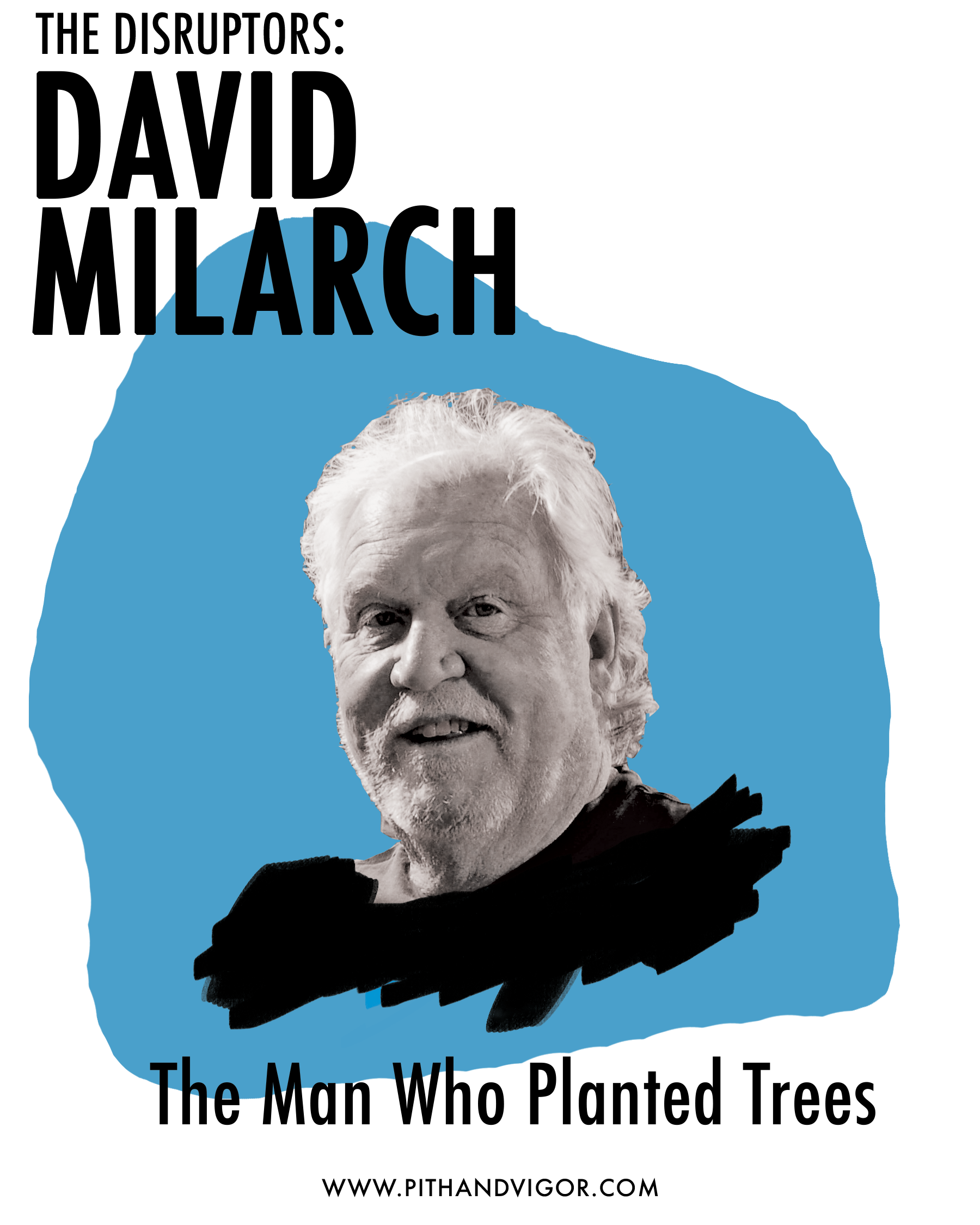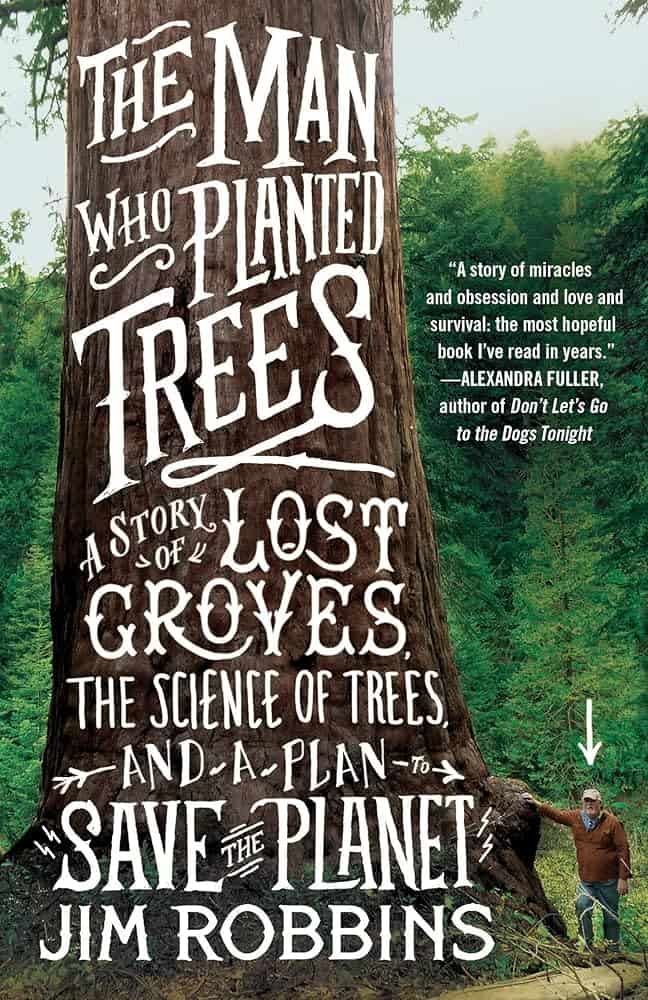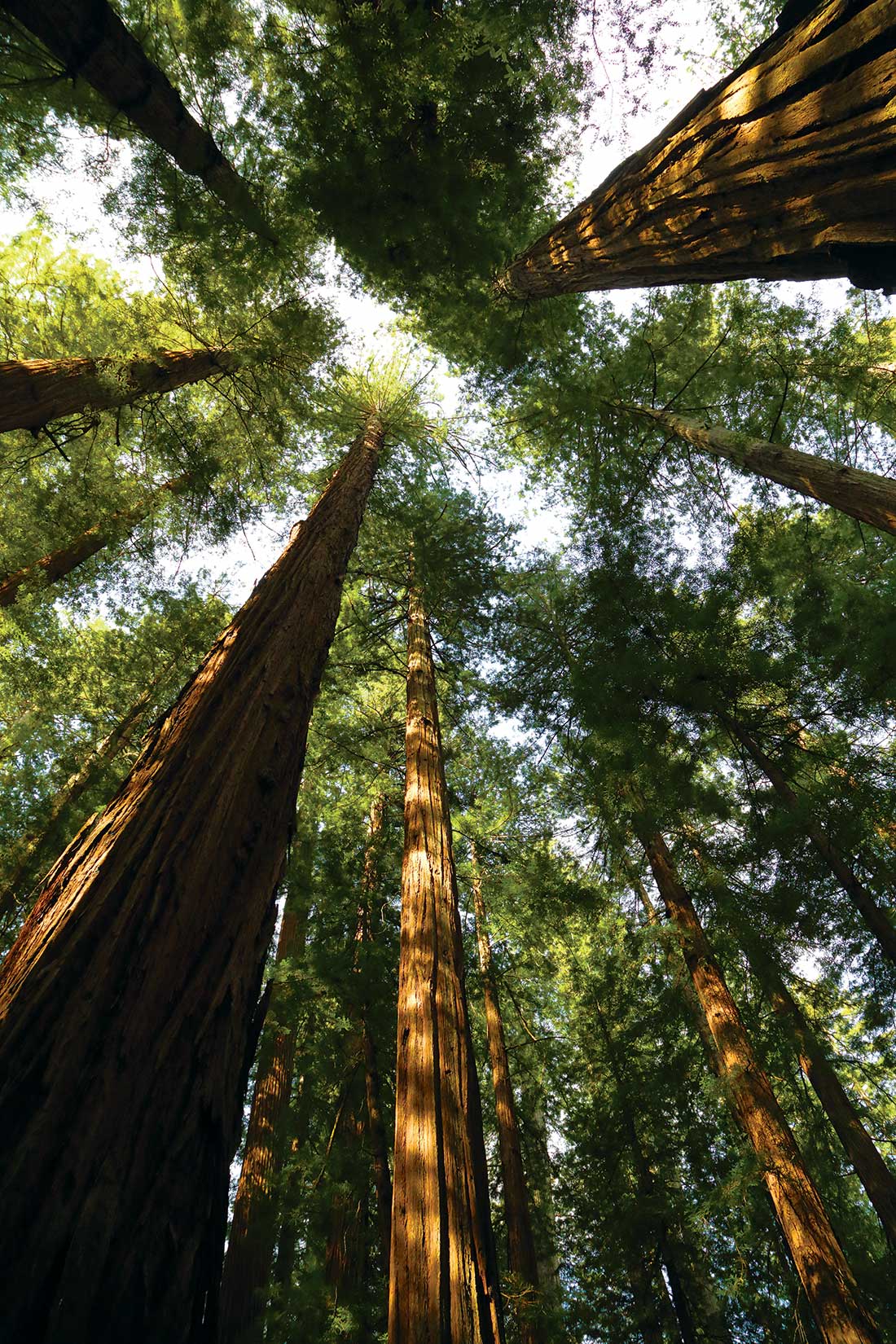In the world of trees, there’s a modern-day Johnny Appleseed whose mission goes beyond planting apple orchards. His name is David Milarch, a man with a remarkable vision and an even more extraordinary mission. To resurrect the giants of the forest, the ancient trees that have witnessed centuries of history. Through the Archangel Ancient Tree Project, David Milarch and his team are on a quest to propagate and preserve the genetics of these living legends. It is a mission that not only hopes to protect the planet’s biodiversity but also has the power to restore ecosystems and combat climate change.

Meet David Milarch – The Man Who Planted Trees
David Milarch is a fourth-generation German shade tree farmer who lives in Michigan. Two subsequent generations (his two sons and their children) are coming up behind him.
David tells a remarkable origin story for his Archangel Ancient Tree Project.
In 1991, David had a near-death experience that changed the trajectory of his life’s work. After suffering kidney and liver failure, he describes his consciousness leaving him but returning after passing through a brilliant white light.
While on the other side of the light, he was told his work wasn’t done and he needed to go back.
A few months later, he had a second remarkable experience. He describes getting up in the middle of the night and writing a ten-page outline for what is now the Archangel Ancient Tree Archive.
He remembers none of it and explains that the outline was written in an unfamiliar form and style. The result, he believes, of being the vessel through which a message was passed. The message – via an angel – directed him to clone the champion tree of every species and then replant them far and wide. That mission has since been his life’s passion.

The Archangel Ancient Tree Project
The Archangel Ancient Tree project is a non-profit environmental group whose mission is to capture, clone, and replicate ancient trees’ genetics to save arboriculture.
Milarch is a classic disruptor with a sense of urgency and a disagreeable (in the best possible way) attitude. He also can re-frame the problem of climate change and imagine a path forward where we can reverse the effects by planting enough of the right kind of trees.
New York Times journalist Jim Robbins wrote a book about Milarch in 2012 called “The Man Who Planted Trees, A Story of Lost Groves, the Science of Trees and a Plan to Save the Planet.”
Milarch has traveled the world to find and clone every species’ most significant and oldest trees.
He has given TED talk presentations to NASA, and I discovered his message at my own regional New England Grows. The movie rights to his life have been sold, and Hollywood fundraising is underway.
To speak with Milarch is to listen to a passionate man whose vision is singular and clear. Clean up the planet’s air and water and reverse the effects of climate change by cloning the world’s most significant, oldest trees.

Saving the Trees – Why Champion and Ancient Trees?
Deforestation has rapidly decimated old-growth forests. It mostly happened before scientists had time to study the genomes and the ecology of the longest-living species – ancient trees.
Before industrialization, a squirrel could travel from the Atlantic to the Mississippi in the branches of a great forest full of white pine, oak, hemlock, and other species without touching the ground. The oldest of those trees were, and are, hundreds and perhaps thousands of years old. They have proven resiliency to years of weather and environmental challenges.
They are the survivors and pose the best chance of having the genetics and epigenetics (trait variations caused by external or environmental factors that switch genes on and off) that allow them to thrive in our current and future climate. Additionally, large, long-lived trees, by their sheer size and mass, provide the best mechanisms for cleaning our air and water and sequestering carbon.
98 Percent of Our Original North American Forests are Gone
It is estimated that 98 percent of our original North American forests have been destroyed, and most of the remaining 2 percent are not protected. Scientists and climate change experts agree that restoring natural systems that keep our earth healthy is the only way to reverse (not just halt) climate change.
Cloning our oldest and largest trees is a good idea if we are to step away from the precipice of monocultures that we heavily rely on today for our food plants and our gardens.
A vast amount of undiscovered science and ecology takes place in tree canopies and the roots of great forests. To understand what we do not know, we must study what we have left and save what we can.
Until the mid-nineties, cloning projects of old sequoias had not been successful. The prevailing belief in the scientific community was that the older the tree became, the less likely it would be to create a successful clone. David Milarch likens the challenge to a 100-year-old woman trying to get pregnant and carry a full-term healthy baby.
Armed with sheer determination and having no sense of a ‘can’t do’ attitude, David Milarch has experimented with and employed various techniques to coax genetically identical saplings from some of the oldest trees on the planet. He is archiving and replanting these trees and ensuring their genetics cross-pollinate with our existing trees and live on within the newest trees in our ecosystem.

A Life Line Of David Milarch & The Archangel Ancient Tree Project
1960 – Weeding in the Milarch family shade tree farm and nursery at ten years old.
1977 – Married Kerry Milarch and built a log cabin home in Copemish, MI on family land.
1991 – Near-death experience and vision to create tree archive.
1992 – Jared Milarch (David’s son, age 12) collected the first big tree DNA.
1994 – First significant cloning of a champion tree – The Buckley Elm. Collected by David and Jared Milarch and propagated by Schmidt’s Wholesale Tree Growers in Oregon.
1997 – Successful cloning of the Buckley Elm led to the first significant press coverage about Milarch’s tree cloning. Milarch meets Terry Mock, a nurseryman who advocates for native plants and trees in South Florida.
2000 – With the help of Terry Mock, The Champion Tree Project (later known as the Archangel Ancient Tree Archive) receives funding from the National Tree Trust.
The Buckley Elm Dies
2002 – The original Buckley Elm died of Dutch Elm disease. The Milarchs, with the assistance of Dow Botanical Garden, re-planted clones of the Buckley Elm.
After planting Red Ash trees at the request of Senator Carl Levin at a 9/11 memorial site at the Pentagon, Milarch was informed that the National Tree Trust was being dismantled and his funding would end a year prematurely.
2003 – Jared Milarch and his team attempted to clone Methusula, a 4800-year-old bristlecone pine and the oldest known tree in the world. The clones didn’t take, but seeds gathered simultaneously were successfully grown. Bristlecone pine (like many trees) self-pollinate, so there remains a chance of a 100 percent genetic match.
2008 – After years of a persistent lack of reliable financial support, the Champion Tree project secured backing from a patron. The funding would allow Milarch to dedicate resources to building facilities and expanding propagation and collection operations.
2009 – Black mold, or mucor, infected the propagation warehouse, and 16,000 seedlings were lost.
Diana Beresford-Kroeger helps Establish the list of the 100 most important trees.
2010 – With the help of Diana Beresford-Kroeger (an Irish-born botanist, medical biochemist, and author of “Arboretum America: A Philosophy of the Forest” and other books), the Champion Tree project establishes a list of the first 100 trees from the global forest to be cloned. Each of these trees is identified as the most important to the ecosystem and life and necessary in case of climate catastrophe.
2011 – Milarch’s team cloned and propagated a 3000-year-old sequoia known as The Waterfall Tree.
2012 – Jim Robbins’s book about David Milarch, “The Man Who Planted Trees,” was published by Speigel & Gau. Due to a lack of funding at the Archangel Ancient Tree Archive, Milarch and his sons were laid off, and the staff of 18 was reduced to just a few people. Later in the year, however, an anonymous donor gave Archangel enough money to keep the organization afloat for at least another year.
2014 – The Eden Project in Cornwall, England, led by Tim Smit, began working with Milarch’s team. They planned to plant old-growth redwoods from the Fieldbrook stump in England and another ancient forest restoration project in Ireland.
2015 – The champion of each of the 826 tree species in the United States is being cloned. Archangel begins working with five new countries to clone, plant, and help set up facilities to continue saving tree genetics worldwide.
The Arch Angel Ancient Tree Project – Going Forward
The Archangel Ancient Tree Archive continues to operate with the resources at hand as best it can. Milarch estimates they have about 30 percent of the funding they need at any given time. Despite chronic underfunding, they continue to find ways to advance projects worldwide. Additionally, the movie rights to David Milarch’s story have been sold. Fundraising for a feature-length movie about his life and the Archangel Ancient Tree Project is underway.
Images: Don McCullough and Sara Hoover / Interlochen Public Radio
READ
WATCH
David Milarch, TED Talk and Moving the Giants
DO
Scientists calculate if every person alive today planted two trees per year, yearly, climate change would reverse in 20 years. (Caveat: trees must be long-living large native shade trees)
VISIT
The Archangel Ancient Tree Archive is a non-profit that constantly needs resources. To learn more and help support the organization, visit ancienttreearchive.org
+comments+